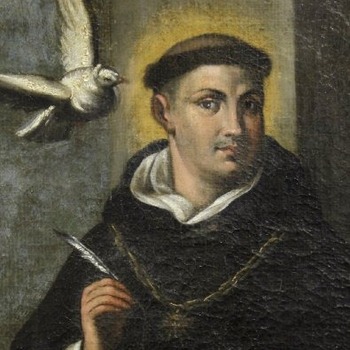-
 August 9, 2025By Effie Caldarola, OSV NewsThere's a well-known story about the time a journalist asked St. John XXIII an innocent question. "How many people work at the Vatican?" queried the reporter.
August 9, 2025By Effie Caldarola, OSV NewsThere's a well-known story about the time a journalist asked St. John XXIII an innocent question. "How many people work at the Vatican?" queried the reporter.
"About half of them," replied the pontiff with a smile.
Every time I read that spontaneous response, I laugh anew. I was rereading Jesuit Father James Martin's book, "My Life with the Saints." This book was published in 2006, before the good pope was canonized. And it's been around my house for a while, too, a ragged-around-the-edges book purchased in a second-hand store years ago.
In a decluttering mood, I tackled a pile of old books. Why let them collect dust when someone else might benefit?
I'm a Martin fan -- his "Come Forth" and "Jesus A Pilgrimage" are among my favorites. So, I enjoyed the "Saints" once again.
Part spiritual memoir, part insights into the saints who have influenced him, the book benefits from Martin's personal touch. He begins with St. Jude, because as a child he responded to a magazine ad for a small, inexpensive statue of this saint of "hopeless causes." Although Martin's family wasn't particularly religious, he thought it was cool to order despite not knowing anything about the saint.
Martin moves on to other saints who've touched his life, and not only saints who have been officially canonized in the church. For example, as a college business student, he stumbled upon a documentary about Thomas Merton, and delving into Merton's life changed Martin's vocational journey.
The chapter on Mother Teresa -- canonized in 2016 -- was fascinating. I learned more about the saint of the slums, but Martin's own experience was jarring. As a Jesuit novice, he worked at a hospice in Jamaica run by the Missionaries of Charity, the order Mother Teresa founded.
His description of his duties -- "grim work to which I never grew accustomed" -- is not easy reading. His task was guiding poor, elderly men into the shower, undressing them from often deeply soiled clothing, helping them wash themselves, reaching "places that they couldn't reach."
For a germaphobe like me, it was tough to read and even tougher to imagine doing this with charity. And then there was the toenail clipping. Would I have made it through the Novitiate? I'm glad Martin did.
I learned more about St. Thomas Aquinas in Martin's chapter on him than I remember from my long-ago philosophy classes. The man reputed, perhaps unfairly, to be quite rotund comes to life as not just a brilliant man but a poet who wrote some of our favorite hymns like "Pange lingua" and "Tantum ergo."
I learned much about saints I thought I knew, but the Ugandan martyrs' story was new and deeply moving. While spending two years in East Africa with Jesuit Refugee Services, Martin was impressed by the Ugandan martyrs' witness. Murdered by their local king in the late 19th century, their martyrdom reminds us of the early Christians. Forty-five Christians -- 22 Catholics and 23 Anglicans -- were burned alive for the faith.
Martin explores the question: Do we pray for the intercession of saints? Or is their primary function as role models? Every prayer is ultimately a prayer to God, to Jesus. But, I too, have "special saints." I believe the saints desire to walk with us, and like a good friend they lift their voices on our behalf.
I'm inspired by the old adage, "Every saint has a past and every sinner has a future." I'm called to ask, what saints have influenced me? How am I called to be a saint? And how do "my" saints walk with me on that journey?
